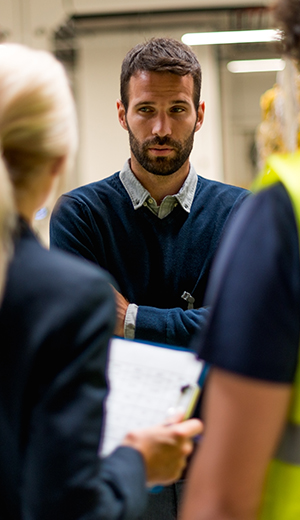Leading Customer Loyalty®

Engage your team to win the heart of every customer.
Are your customers loyal to your organization? More than 70% of what makes a customer experience great is the behavior of frontline employees. Great behavior doesn’t happen without inspiration and accountability, and that requires a bottom-up approach—not the typical top-down corporate method. If your employees are enthusiastic promoters of your organization, the sentiment will resonate with your customers too.
Free Guide
Turn average employees into high performers by applying some basic truths about human motivation.
Free Webcast
Crack the code to customer devotion with FranklinCovey’s loyalty practice leader, Sandy Rogers.
Learn more about Leading Customer Loyalty
Course Overview
Introduction
Leading Customer Loyalty is a one-day work session for frontline managers to learn the principles and practices needed to win the hearts of employees and their customers. Managers leave with a clear understanding of how to model, teach, and reinforce empathy, responsibility, and generosity.
What You’ll Learn
In this course, participants will learn how to:
- Make genuine human connections.
- Listen and communicate with empathy.
- Discover the real “Job to be Done” for customers.
- Follow up to learn how to improve and resolve concerns.
- Give and receive feedback that builds people up.
- Inspire the team to share their best thinking and ideas.
- Run effective loyalty team huddles.
This course is included in the FranklinCovey All Access Pass®. This pass provides your organization unlimited access to all of our content, whenever and wherever you need it.

Dynamic education and development, available online from any location.
Expert education and development delivered face-to-face.
Content available to your people anywhere, any time.












